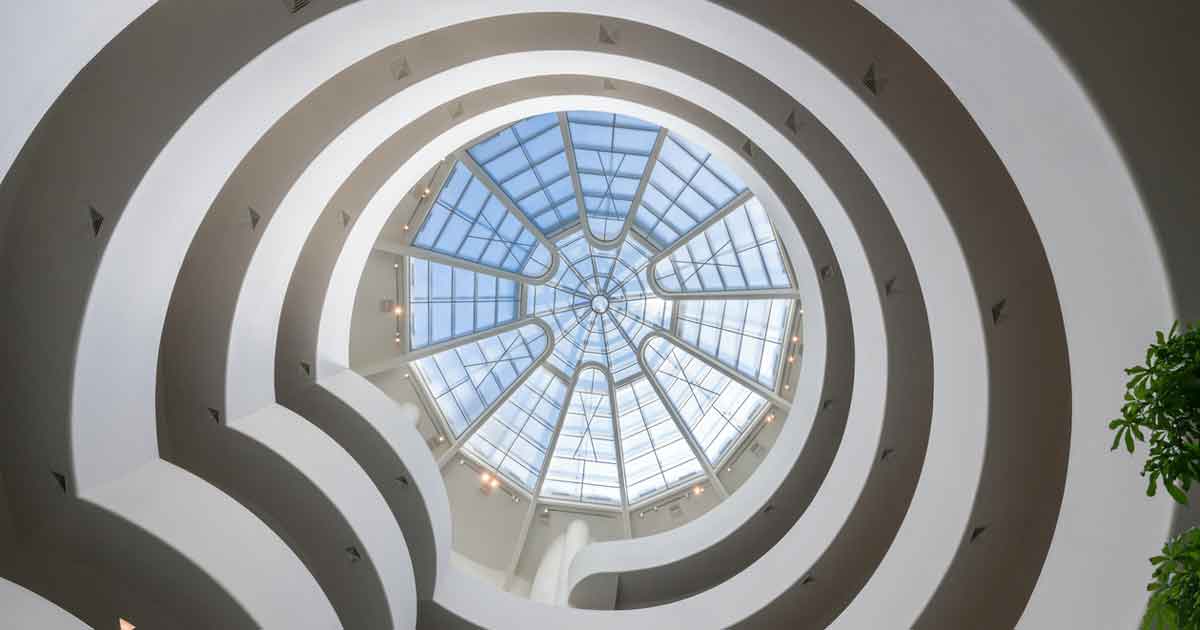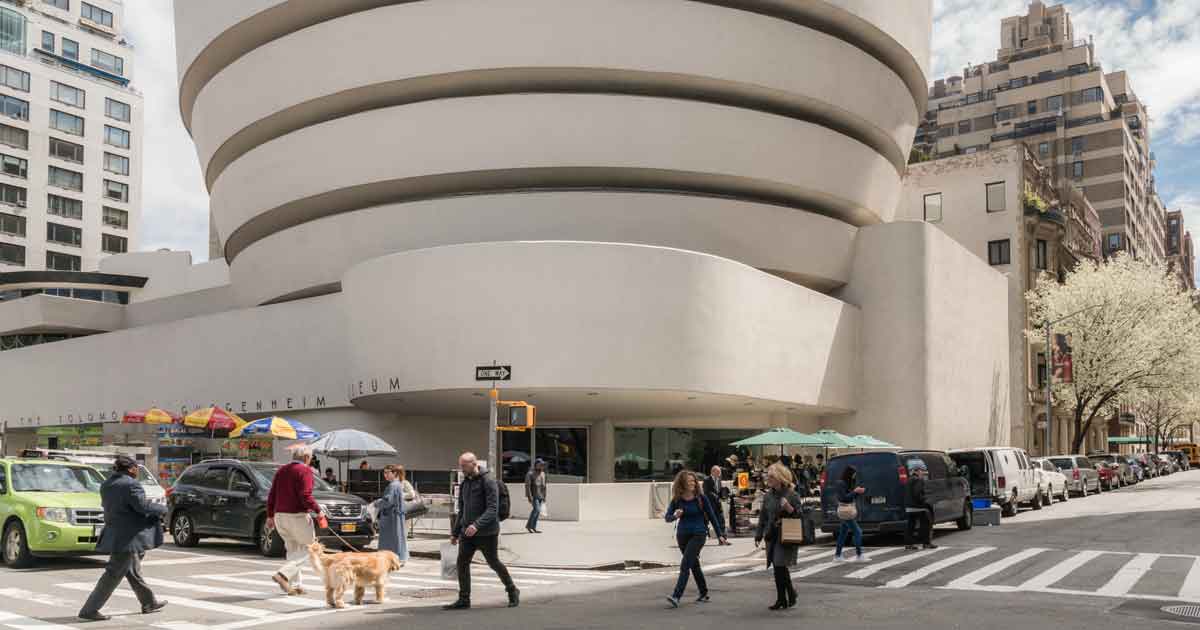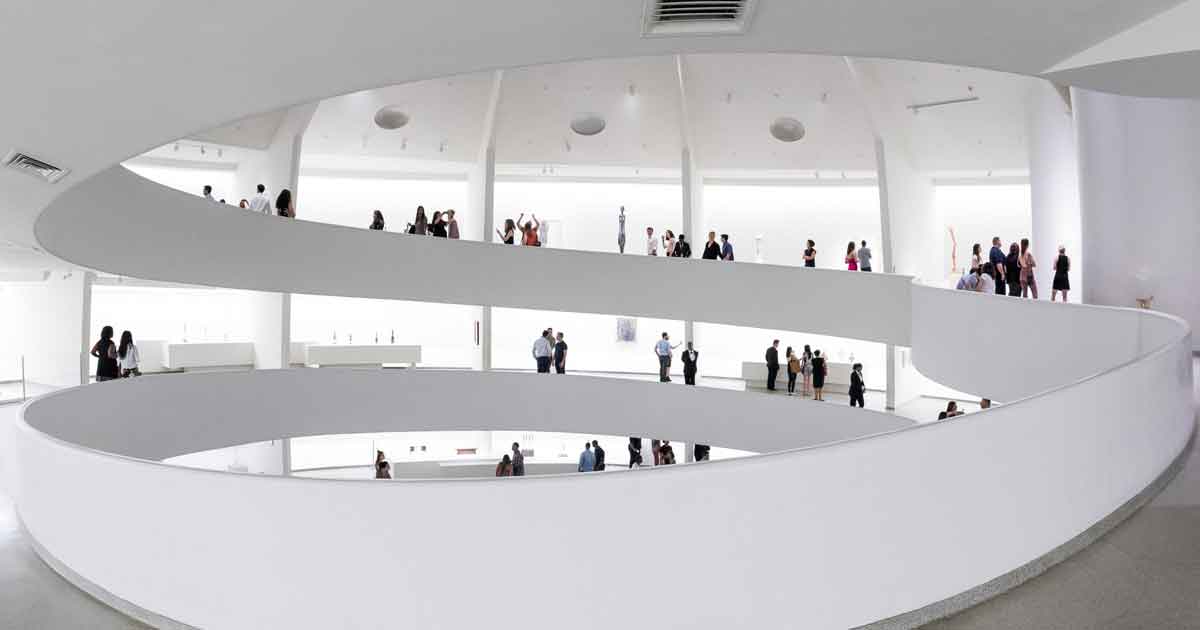
A New Look at the Guggenheim: The Hidden, Unusual and Unexpected.
Nobody knows the Guggenheim Museum in New York quite like its Gallery Educators, who have countless hours of tour leading experience under their belts.
In celebration of the museum's 60th anniversary, we asked these Gallery Educators to share their favorite places in the building—many unseen by the average visitor. Did you know there's a theater below the rotunda floor? Learn what your group should keep an eye out for on your next visit.
The Solomon R. Guggenheim Museum, an internationally renowned art museum and one of the most significant architectural icons of the 20th century, was designed by Frank Lloyd Wright and completed in 1959. Today, the museum is an ever-evolving institution devoted to the art of the 20th century and beyond: an ideal place for students and architecture lovers to embrace their own creativity.
While visiting, most visitors miss seeing the Triangle Staircase, "tucked away" behind the rotunda elevator—yet it's undoubtedly an important architectural moment. Even people who've been visiting the museum for several decades have reported never seeing the staircase. This excellent photo op is a chance for students to admire architecture hidden in plain sight.
In the galleries, where the Frank Lloyd Wright original building and Gwathmey Siegel's Tower Addition (1992) meet, one can see the frieze—showing where the museum once ended and what would have been on the outside of the original building. Also rarely noticed are the telephone booths—a relic of the past—located just off the rotunda.

Exterior of the Solomon R. Guggenheim Museum, New York. Photo: David Heald © SRGF, NY
Visitors may not know that the entire spiral and all the ramps are cantilevered! Speaking of architectural support: Gallery Educators note many visitors don't realize the "web walls" are structurally important. As visitors climb the spiral, ramps deepen and widen, concaving as they walk up—seemingly breathing. Frank Lloyd Wright envisioned the Guggenheim as an "inverted-ziggurat."

Interior of the Solomon R. Guggenheim Museum, New York. ©SRGF, NY.
It's not well-known that the reason for the bumpiness of the exterior, only seen in a certain light, is because of the unique architectural approach. The bumps and ripples allow one to "see" the hidden wooden frame—one-of-a-kind plywood forms that shape the iconic sweeping curves of the building. The museum is constructed of "gun-placed concrete" (also referred to as "gun-concrete" and "gunite"), which is sprayed into a plywood formwork rather than poured.
When standing in Café 3, looking over the balcony, groups get a "steamship view" that feels very boat-like due to views of the street being blocked—adding to the feeling of being at sea.
Stepping into the Thannhauser Collection, visitors could get a view of a "mini-rotunda," the details of which are often overlooked in favor of the main rotunda—including the almond-shaped pillars.
The acoustic quality changes throughout the museum. For instance, there is a special spot in the rotunda where you can hear crystal-clear conversations on the other side of the rotunda.
Additional intriguing facts visitors will love:
- Frank Lloyd Wright originally wanted the museum façade to be covered in red marble.
- The museum has no right angles.
- Movies filmed at the Guggenheim include Bye Bye Birdie, Mr. Popper's Penguins, Men in Black, The International and When in Rome.
- The Aye Simon Reading Room was once used as a broom closet.
Learn more and plan your visit at The Guggenheim.
Courtesy of The Solomon R. Guggenheim Museum.
Main photo: Interior of the Solomon R. Guggenheim Museum, New York. Photo: David Heald © SRGF, NY.



